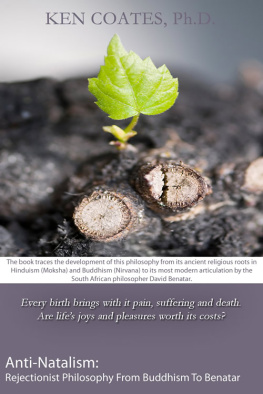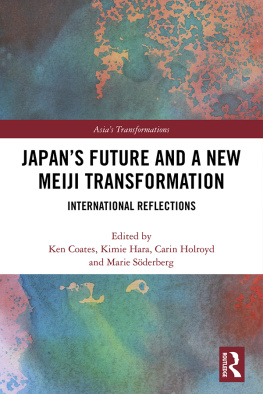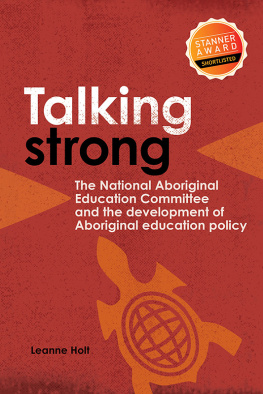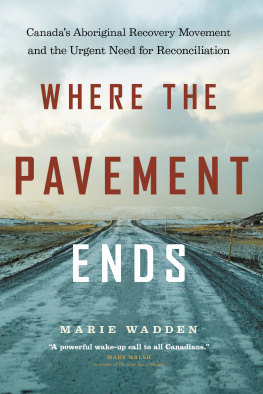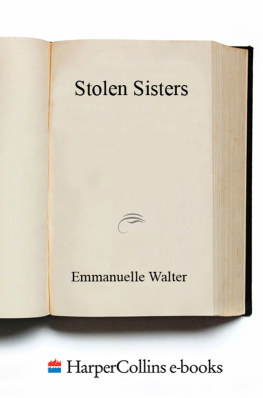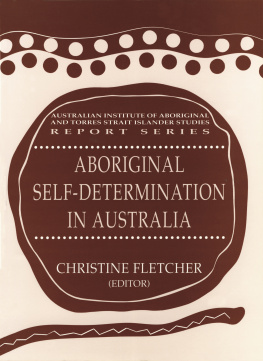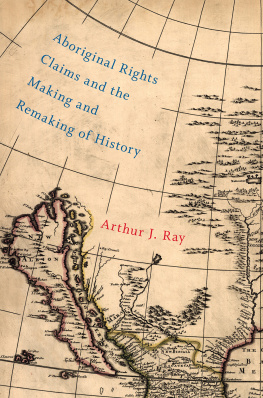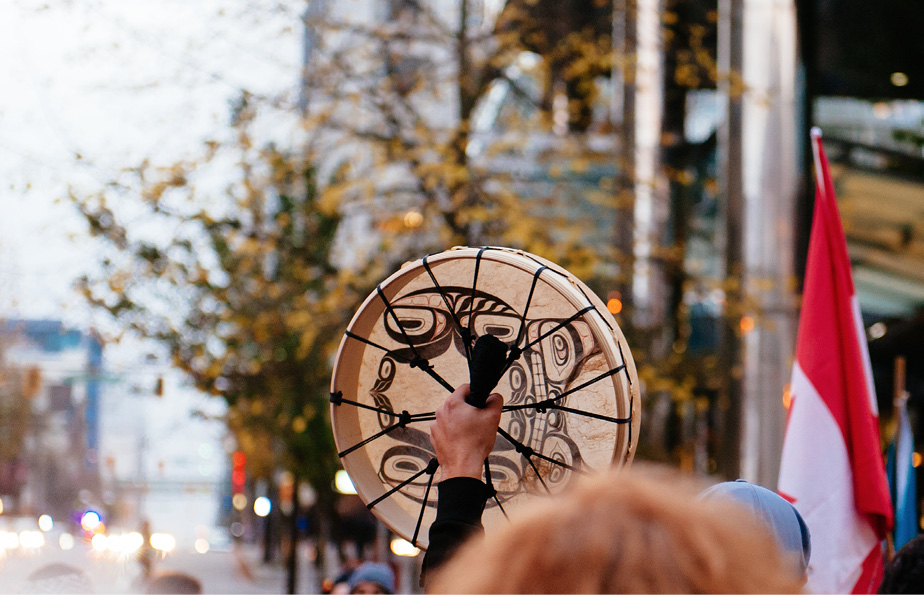# IDLENOMORE
and the Remaking of Canada
Ken CoateS

Copyright 2015 University of Regina Press
All rights reserved. No part of this work covered by the copyrights hereon may be reproduced or used in any form or by any meansgraphic, electronic, or mechanicalwithout the prior written permission of the publisher. Any request for photocopying, recording, taping or placement in information storage and retrieval systems of any sort shall be directed in writing to Access Copyright.
Cover and text design: Duncan Campbell
Cover image: Alan Clarke
Library and Archives Canada Cataloguing in Publication
C oates, Kenneth, 1956-, author
#IDLENOMORE and the remaking of Canada / Ken Coates.
Includes bibliographical references and index.
Issued in print and electronic formats.
ISBN 978-0-88977-342-4 (paperback).--ISBN 978-0-88977-343-1 (html).--
ISBN 978-0-88977-344-8 (pdf)
1. Idle No More (Movement). 2. Protest movements--Canada. 3. Native
peoples--Canada--Government relations. 4. Native peoples--Canada--Ethnic
identity. I. Title. II. Title: IDLENOMORE and the remaking of Canada.
III. Title: Idle No More and the remaking of Can ada.
E92.C5585 2015323.1197071C2015-901653-3C2015-901654-1
University of Regina Press, University of Regina
Regina, Saskatchewan, Canada, S4S 0A2
tel: (306) 585-4758 fax: (306) 585-4699
web: www.uofrpress.ca
The University of Regina Press acknowledges the support of the Creative Industry Growth and Sustainability program, made possible through funding provided to the Saskatchewan Arts Board by the Government of Saskatchewan through the Ministry of Parks, Culture and Sport. We also acknowledge the financial support of the Government of Canada through the Canada Book Fund and the Canada Council for the Arts for our publishing program. This publication was made possible through Culture on the Go funding provided to Creative Saskatchewan by the Ministry of Parks, Culture and Sport.



This book is dedicated to Aboriginal children across Canada.
May they be inspired by Idle No More and understand the potential for a better future.
Idle No More event: Elsipogtog Solidarity rally in Vancouver on October 18, 2013. Photo: Lukasz Szczepanski
Preface
Quiet No More
P rairie winds often start gently. At first, the long prairie grasses and stands of wheat and canola begin to sway, almost imperceptibly. The softness in the onset of these winds is like a caress that, even on a cool fall day, carries more promise than risk. The movement of air is hardly noticeable, but it is there, possessing power and substance. Perhaps it is that, the absence of danger but the presence of real power, which makes prairie winds so invigorating.
Prairie winds rarely stay calm. At times, they die down completely, bringing near silence to the land and leaving the impression that the power has dissipated, that the threat has disappeared, and that all will stay as it is. More often, the breeze picks up slowly, the soft swaying of foliage replaced by a noisier rustling, a persistent background sound that heightens unease and speaks to an untapped power. You can feel the wind at these times; it is strong without being severe, bold but not ominous. You can see this iteration of the wind, or so it seems. It is that which pushes the prairie grasses and sways the roadside trees.
When it further intensifies, the wind can be staggeringly strong. In winter, it whips the dry, western snow into a frenzy, pushing a white wall across the landscape that obliterates the vast skies and reminds humanity of its smallness and vulnerability. In summer, it picks dirt up off the farmers fields, and thus the wind gains a body with taste and grit, driving dust into eyelids and through tightly clenched teeth. In this form, the wind can usher in a storm, complete with rainclouds and torrential downpours. Midday skies turn black. Rain or hail beats down ferociously. The wind can terrify us as it threatens to uproot safe and comfortable lives.
The temptation to hunker down, to avoid the threatening storm, is overwhelming.
Is it surprising that the prairie wind, with its many faces and great strength, also carries a transformative power that can allow us to see the world in a different light? The storm clouds pushed along by this wind provide relief for the lightning, sharp and powerful, that illuminates the sky with a subtlety that defies description. So soft and pervasive is the reach of this light that colours change hue and landscapes are seen anew. And the same wind that brought in vast banks of clouds also creates small openings: light peaks through in strange and beautiful ways. Fear is replaced by wonder as the storm clouds that moments ago seemed full of danger become things of beauty. Black and imposing on the top, they are radiant and sunlit on the bottom. It is here, in a landscape transformed, that one of the most fundamental lessons of prairie life is learned: consider the wind; do not turn away from it. Do not hunker down, and do not assume the worst. Turn toward it and wait for the light. In that moment of luminescence, those precious seconds during which the clouds part, you will see light, power, and beauty rise from below.
The world recently experienced a personification of the prairie winds: Idle No More, a movement as surprising and as transformative as a sudden prairie storm. Frightening for some, difficult for most to understandincluding those at the hundreds of events that sprang up across Canada in 2012 and 2013Idle No More arose as does a perfect prairie storm. Unleashed on a surprised nation, propelled by forces that, like the gentle winds, turn in a matter of seconds into a formidable blizzard, Idle No More swept across Canada with stunning speed and strength.
As a political movement, it had almost everything: a powerful message, legions of supporters, and a hungry media eager to forage off the turmoil. Everyone in Canada knew Aboriginal people were angry. Aboriginal political leaders have described the poverty and despair that engulf many of their communities. Academics have described the hardships, cultural dislocation, and historical injustices that shape First Nations, Mtis, and Inuit realities. Journalists have chronicled the glue-sniffing, health crises, domestic violence, over-stuffed penitentiaries, and political unrest that percolates across the country. In an Aboriginal political world defined in the publics eye by conflicts at places like Burnt Church (New Brunswick), Gustafsen Lake (British Columbia), Caledonia (Ontario), the Oldman River (Alberta), and Oka (Quebec), anger seemed both just and inevitable. That hundreds would take to the streets in protest was far from surprising.
But as political protests go, key elements were missing. Idle No More had founders but no leaders. There was no manifesto at first, no real organization, and an almost complete absence of an effort to manipulate, aggregate, or intimidate. At first glance, the arrival of hundreds of Aboriginal people in shopping malls and on street corners seemed deliberately threatening. Yet the people were singing instead of yelling. They didnt demonstrate but danced. They had a purpose, but to many people it seemed deeply buried or, at least, confused. This was a protest, if it was that at all, of mothers and children more than warriors and activists. All events associated with Idle No More were astonishingly calm. Culture mattered more than politics.


